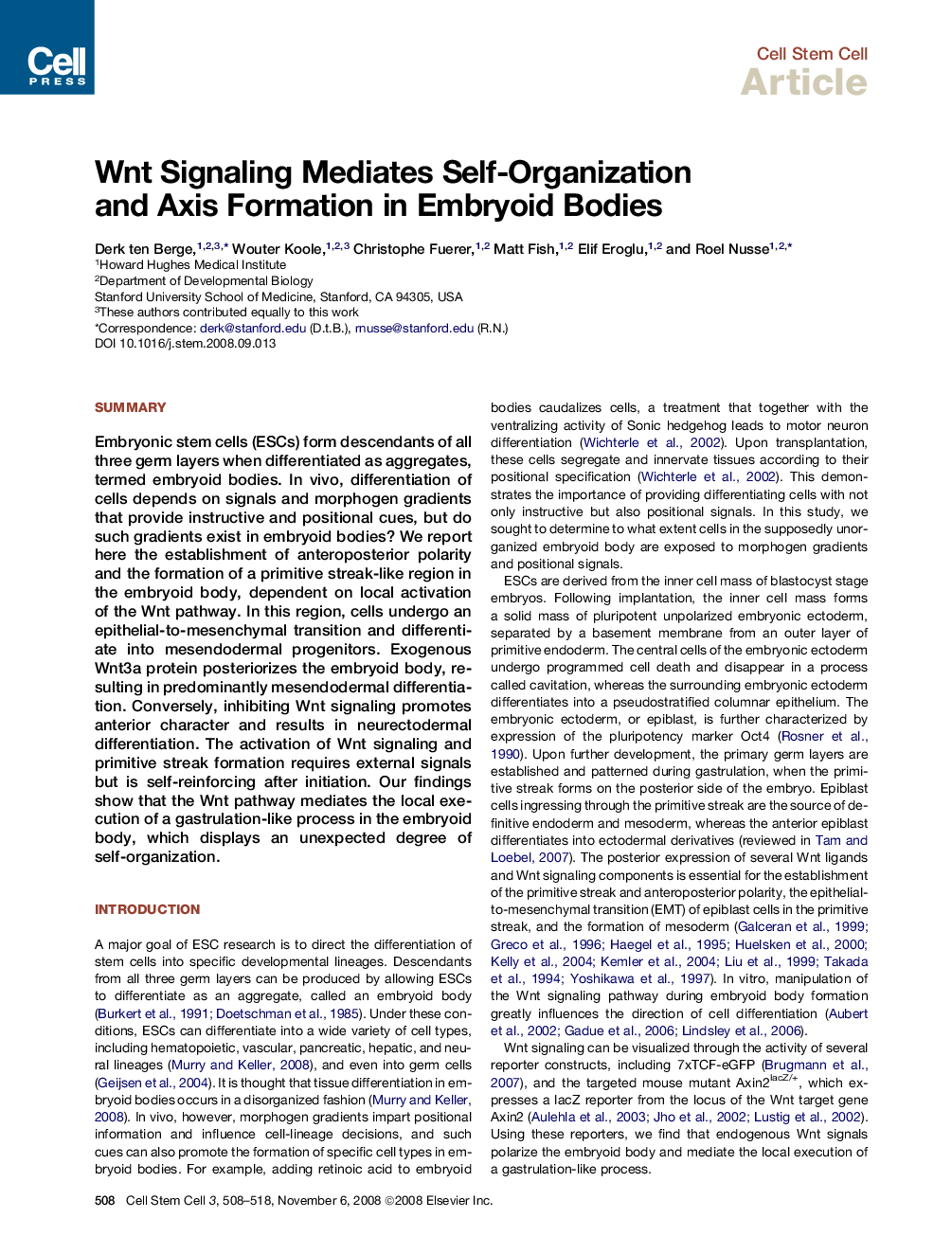| Article ID | Journal | Published Year | Pages | File Type |
|---|---|---|---|---|
| 2078310 | Cell Stem Cell | 2008 | 11 Pages |
SummaryEmbryonic stem cells (ESCs) form descendants of all three germ layers when differentiated as aggregates, termed embryoid bodies. In vivo, differentiation of cells depends on signals and morphogen gradients that provide instructive and positional cues, but do such gradients exist in embryoid bodies? We report here the establishment of anteroposterior polarity and the formation of a primitive streak-like region in the embryoid body, dependent on local activation of the Wnt pathway. In this region, cells undergo an epithelial-to-mesenchymal transition and differentiate into mesendodermal progenitors. Exogenous Wnt3a protein posteriorizes the embryoid body, resulting in predominantly mesendodermal differentiation. Conversely, inhibiting Wnt signaling promotes anterior character and results in neurectodermal differentiation. The activation of Wnt signaling and primitive streak formation requires external signals but is self-reinforcing after initiation. Our findings show that the Wnt pathway mediates the local execution of a gastrulation-like process in the embryoid body, which displays an unexpected degree of self-organization.
